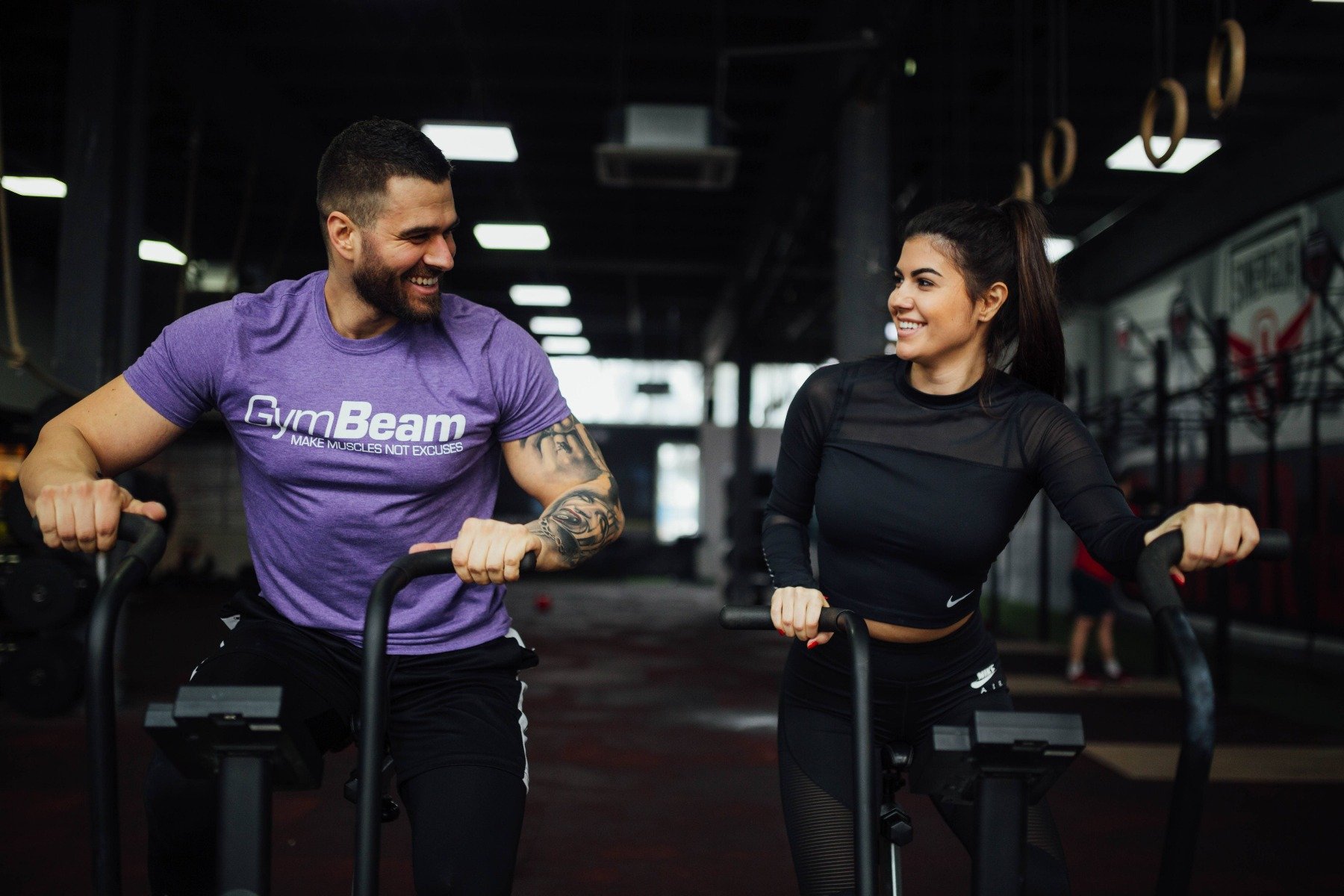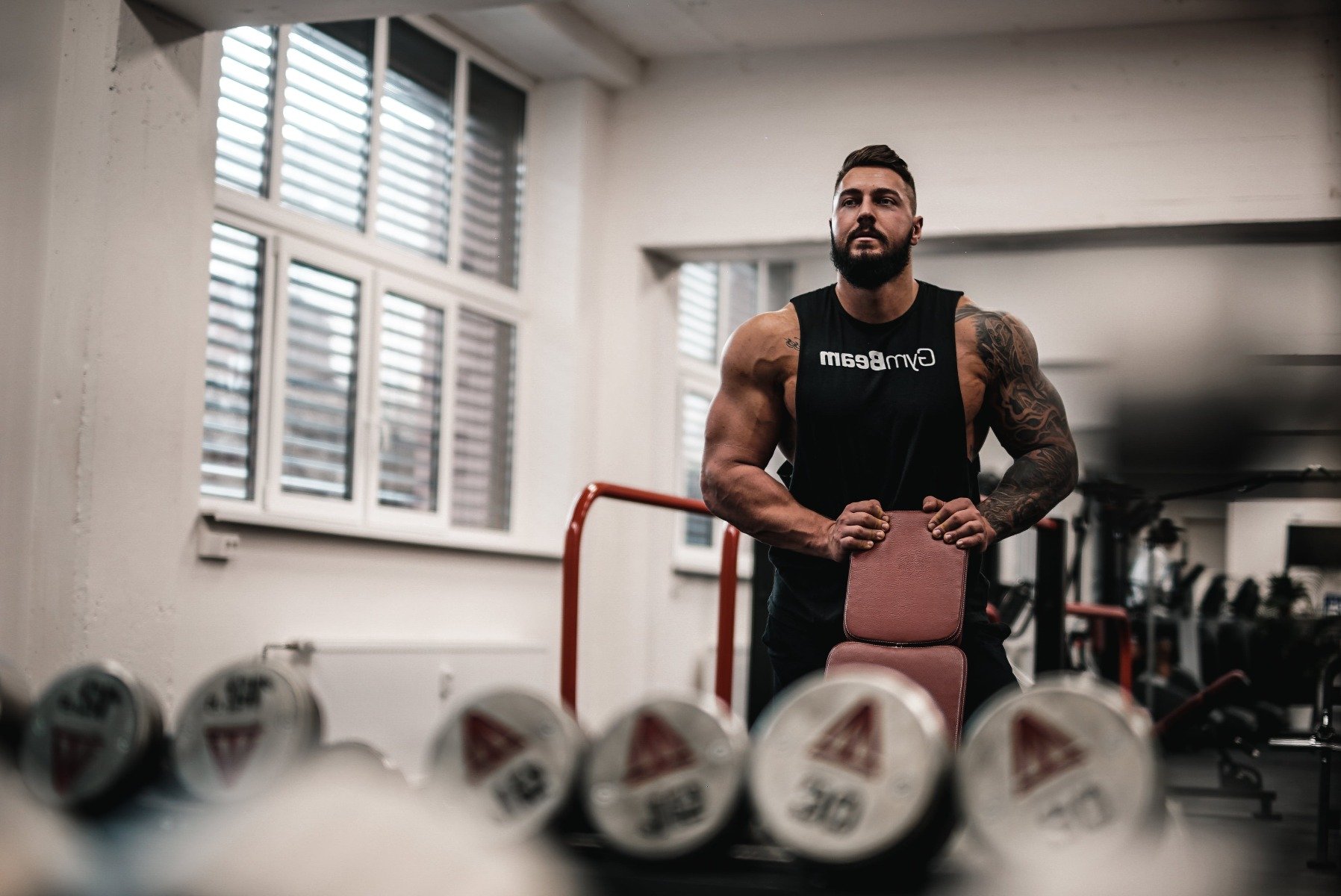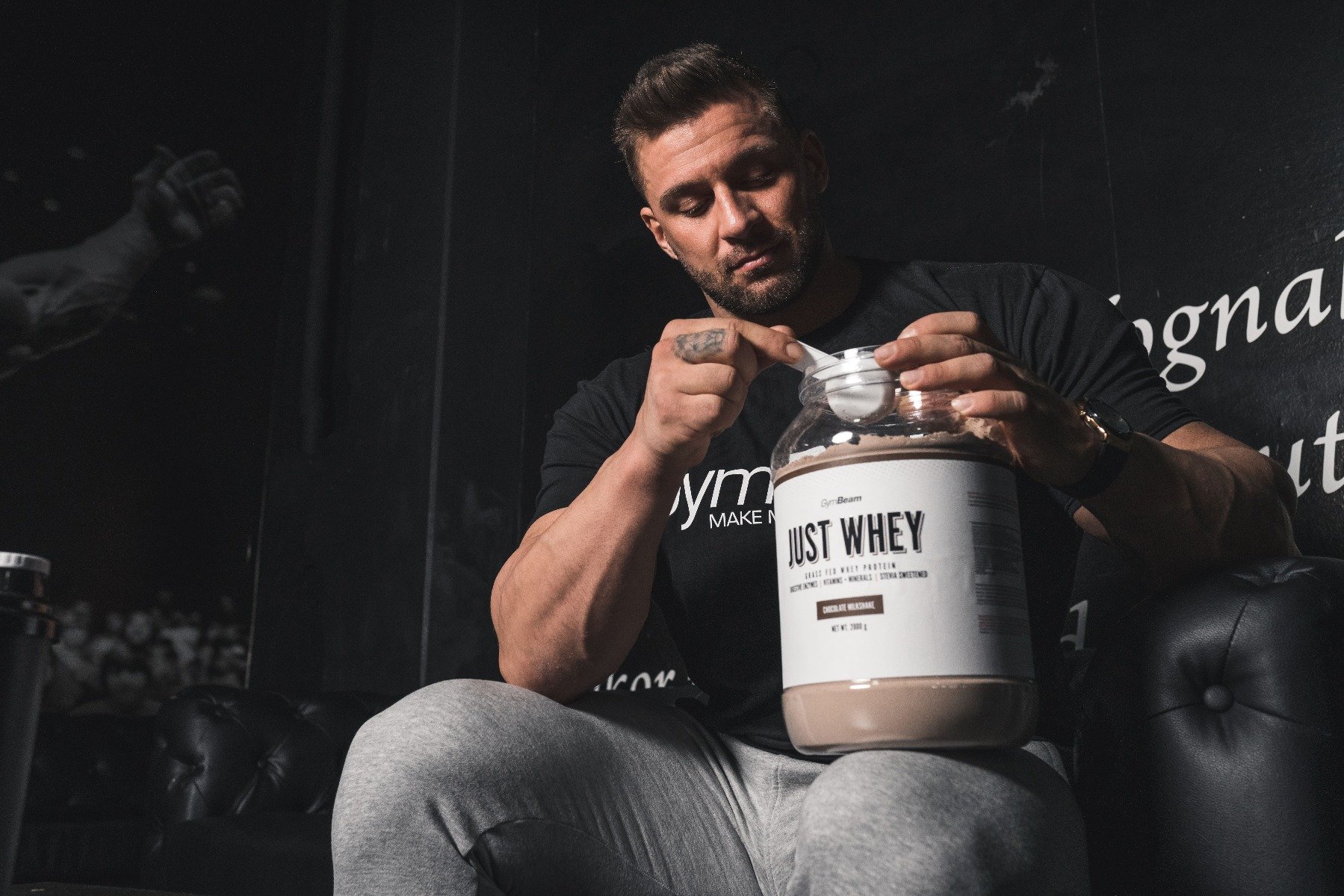Working out properly is not nearly as easy as many people think. During the training, people may make mistakes which at best, can produce no or only minimal results. In a worse case, training can bring more harm than good and can really harm your health. In this article, we will show you the better case, a common problem for many athletes and active people and the problem is insufficient result from working out. You will get to know the most frequent mistakes people make when training, and we will show you tips for improving your results. If you are already in the stage of demotivation due to stagnation during exercise, do not let the gym membership fall into the dust, go ahead and look for the way to improve with us.
1. You are setting the wrong goals
In life, goals and plans are very important, and as you surely know, exercise is no exception. The overall effort, motivation and hard work should definitely aim somewhere, and you can then suggest a path based on your goal. The first fundamental problem that we often face are the goals, and especially the general ones. If you say you are training for a six-pack on your stomach, this goal may not get you anywhere. It is therefore important to set 2 types of goals [1]:
- Short-term goals – small achievable goals
- Long-term goals – they include short-term goals and their role is to motivate
The short-term goals can be controlled on a regular basis and they will instantly keep you moving towards your long-term goal. You do not need to be an experienced coach or a sports specialist to be able to set a suitable goal. It should contain one key feature – specificity. Therefore, turn the general goal into a specific goal and completely change your view on training. Would you like to see an example? [2]
2. You forget about warm-up
A full-valued training does not consist only of specific exercises, series and reps. Its important parts are also the warm-up and cooldown. These two parts of training can help you reduce the risk of injuries, improve performance, and help you to achieve better fitness results. One of the frequent mistakes that are responsible for the insufficient progress in training is the warm-up, more precisely its absence. Do you know that, too? You have just arrived at the gym and you are looking forward to giving your breasts a hard time today. You put the bottle on the table and suddenly realize that first you should cycle and do a short warm-up for a few minutes. Many people may find it useless to warm up, but the initial warm-up is very important. One of the reasons for skipping a warm-up is, for example, saving time, but trust us, this way of saving time can do more harm than good. The role of a warm-up is to activate and prepare the muscles and body for training but also to crank the heart up to pump more into the muscles. The proper warm-up should include three important steps [3] [4]:
- Begin to gradually increase your heart rate for better blood flow to your entire body, for instance by running.
- Include into your warm-up also exercises for muscle and joint mobility that you will need during your training. For example, if you are going to run, it is a good idea to warm up the ankles, calves, and muscles responsible for proper posture.
- Prepare your mind and warm yourself up with movements that prepare the body for training. If you are going to do exercises with higher weights, during your warm-up, you can separately practice the parts of the exercises which you are going to work on.

You might be interested in these products:
3. You forget about regeneration
Regular training is the best way to reach your dream fitness goal. In addition to your training days, your plan should include also rest days. During these days, the organism has the opportunity to process the progress your body has made during the training days. [5]
Remember, overtraining is not a myth invented by advocates of regeneration. Overtraining is a frequent problem for fitness enthusiasts who constantly level up their skills and neglect a full-valued rest of the organism after training. Do not forget that quality regeneration is as important as a proper workout. Lack of rest can result in injuries from overload as well as overtraining, which can lead to hormonal imbalance, fatigue, and loss of strength. [7]
Are you interested in the topics of overtraining and you would like to know more about it? Read our article Overtraining – fact or myth.

It is great if you can find time for gym and quality training every day, provided you do not spend the rest of the day relaxing on the couch. Do not compensate for everyday gym by reducing other physical activities during the day. It may happen that your daily caloric expenditure will be the same as if you did not exercise at all. [6]
One of the ways to organize your rest days is the 3 ON – 1 OFF training style. This means that three training days are followed by one rest day. However, the time to recover depends on the level of training. For beginners, it is advisable to train 3 days a week, but if you are more advanced, your weekly schedule may contain up to 5 training days. Sleep is also an important component of regeneration, since hormones are produced during sleep, which affects the quality of training. [3]
Are you considering a suitable three-day split? We have a tip for a 3-day Push / Pull Routine. [8]
1. Day – legs and abdomen – exercising legs itself is challenging, but if you do the work with legs properly, it can be an exhausting training. 2. Day – chest, shoulders, triceps and abdomen – this is so called “Push” day, in chest exercises are engaged also triceps and shoulders, in shoulders exercises are engages triceps. 3. Day – back, biceps, forearms and abdomen – “pull” day, during the back workout are engaged arms and forearms.
You can do this workout by rotating which will allow you to have 2 days between workouts. You can also train on certain days, such as Wednesday, Friday, and Sunday. Some people do this split twice a week (3 ON – 1 OFF system), for many of you it is enough if you practice it once a week. [8]
4. Your diet is not appropriate
A balanced diet is very important for a full-valued workout, since it helps improve sports performance. It is not easy to eat properly with all those daily responsibilities, but it is also difficult to establish a diet that works for everyone. Each of us has a unique body, but there are some universal facts to which it is worth paying attention [3]:
- high-quality protein
- essential fatty acids (for example from nuts or avocado)
- unprocessed food
When changing the lifestyle, the change involves not only regular training, but also adjustment of the diet. However, be careful not to make a hunger strike from trying to eat healthy. A 500 calorie decrease should be the maximum weight loss value. If the difference between your calorie intake is more than 500, it may happen that your body will burn less calories to maintain body fat instead of seeing the desired results. The organism will get into the so-called emergency mode, and you will get to the point where you feel hungry, your body will not get enough nutrients, and in addition, you will not lose weight adequately. [7]
One of the frequent mistakes associated with eating is the lack of nutrients during non-training days. Your muscles grow also during the rest days and therefore they need adequate nutrition all the time. Do not limit your body simply because you burn less calories during non-training days. Your body also needs regular meals for balanced functioning, so do not be afraid to give it enough rest and adequate diet. [5]
5. Your training is not challenging enough
Under lack of training you can imagine a number of factors that hinder efficiency and also the results. If you have been doing the same workout for some time and you no longer notice improvement, you should consider whether your workout is challenging enough. There are several ways to increase the intensity of your workouts [7]:
- increasing the weight and reducing the number of repetitions
- adding instability
- incorporating explosive movements
- incorporating circuits
- working out to failure

A frequent factor that affects the effectiveness of training is a too long pause between sets. The adequate pause length depends on the type of workout, for example, weight training focused on high weights requires a longer rest period than cardio workout. Too long pauses reduce heart rate, which may be harmful. [9]
For a better overview, we show the recommended breaks between series according to the training type [10]:
- Strength training – the best time to relax between sets for strength training is 3 – 5 minutes. During strength training, the body takes energy from the ATP system, and ATP uses phosphagens to generate fast energy without the use of oxygen. The body takes about 3 minutes to fully replenish the phosphagen supplies, since the body has only a small supply that lasts approximately 15 seconds. Give the ATP system enough time and it will reward you by managing higher weights and getting stronger.
- Hypertrophic training (for muscle growth) – the body needs 1 – 2 minutes to relax. The energy source is ATP and glycolytic system, therefore a longer interval is not necessary. A shorter rest time (1 – 2 minutes) causes a more pronounced release of hormones with anabolic effect. Among other things, shorter time increases the blood flow to the exercised muscles, which helps proteins get into the muscle faster.
- Endurance training – the most suitable time between breaks in an endurance workout session is 45 seconds to 2 minutes. Energy comes from aerobic metabolism, and body burns carbohydrates and fats in the presence of oxygen. This type of training improves the fatigue resistance caused by lactic acid accumulation. Training with 15-20 reps in one set improves the body’s ability to remove lactic acid.
The technique of performing the exercise is important, but the proper length of break also contributes to adequate results. Would you like to learn more about breaks between sets? Read our article What are the best breaks between reps, sets and workouts?

Conclusive pieces of advice for better results
In conclusion, we have some tips for you to help you achieve better results and progress in training [11] [12] [13]:
- Keep your diet under control – the key to quality training is a proper diet which serves as a fuel during the training and as a source of nutrients during the regeneration.
- Do not forget about proteins – muscles need nutrients after a workout to help them recover, mostly protein from which they get amino acids necessary for their growth.
- Carbohydrates – serve as energy for the organism and you would not have enough energy for an intensive workout without carbohydrates. You should opt mainly for healthy sources of carbohydrates, such as banana.
- Hydration – it takes several hours for body to absorb water, therefore you should maintain regular hydration, thus it is not enough to take fluids only before a workout.
- Do not forget to stretch yourself – your work out should always start with preparation of your muscles and joints. The better your range of movements is, the better results you will achieve when lifting weights.
- Be patient – without patience, the journey towards improvement would be very difficult. It is no harm to regularly take photos of yourself and see your previous body shape. You will certainly be excited about the change and it will also increase your motivation.
- Watch out for overtraining – listen to your body, instant fatigue and slow progress are signs that you need to take a break. You do not need to worry that you will lose your muscle mass or your condition during a short break and proper rest.
- Do not freak out – if you have just started with your training, give your body enough time to adapt to a new activity. A weight training itself is demanding, so do not freak your body out, because it can easily lead to an injury or a burnout.

Training is a demanding process regarding time, its physical or mental demands, therefore it is natural to expect improvement and progress. However, insufficient results can lead to demotivation, or even to overall loss of interest in exercising. The failure may be caused by a poor diet, inadequately set goals, or even lack of rest. We believe you have found this article interesting and you have learned a lot of new information. Do you want your friends to learn about the causes of insufficient workout results? Feel free to support the article by sharing.
[1] Miranda Larbi - 8 common fitness mistakes that are stopping you from reaching your goals – https://metro.co.uk/2017/07/24/8-common-fitness-mistakes-that-are-stopping-you-from-reaching-your-goals-6801436/
[2] Conor O Shea - 10 Fitness Mistakes You Need to Avoid – https://www.lifehack.org/articles/lifestyle/10-fitness-mistakes-you-need-avoid.html
[3] Robin Hendry - 8 REASONS WHY YOU’RE NOT SEEING RESULTS FROM WORKING OUT – https://www.polar.com/blog/8-reasons-not-seeing-results-from-working-out/
[4] SJ McShane - 9 Warm-Up and Cooldown Mistakes Wrecking Your Workout – https://www.livestrong.com/slideshow/13709833-9-warmup-and-cooldown-mistakes-wrecking-your-workout/
[5] Tom Koscher - WORKOUT RECOVERY: WHAT TO AVOID ON REST DAYS & 5 TIPS TO USE IT WISELY – https://www.runtastic.com/blog/en/dont-do-this-on-rest-day/
[6] Malia Frey - How to Avoid the 5 Biggest Workout Mistakes – https://www.verywellfit.com/how-to-avoid-the-5-biggest-workout-mistakes-3495983
[7] Brian Maher - 6 Mistakes That Are Sabotaging Your Fitness Results – https://www.phillymag.com/be-well-philly/2016/03/01/why-youre-not-seeing-gym-results/
[8] Jim Brewster - Training Splits: Which One Is Best? – https://www.bodybuilding.com/content/training-splits-which-one-is-best.html
[9] Samantha Speisman - 18 Workout Mistakes You’re Probably Making – https://www.besthealthmag.ca/best-you/fitness/common-workout-mistakes/
[10] What Is The Optimal Time Between Sets For Muscle Growth? – https://www.bodybuilding.com/content/what-is-the-optimal-time-between-sets-for-muscle-growth.html
[11] Shannon Clark - Over 40 Weightlifting: 6 Important Factors For Optimal Results! – https://www.bodybuilding.com/fun/over40_beginner_training_tips.htm
[12] MD Labs - Top 10 Training Tips For Better Results! – https://www.bodybuilding.com/fun/mdlabs3.htm
[13] Leo Babauta - 16 Tips to Triple Your Workout Effectiveness – https://zenhabits.net/16-tips-to-triple-your-workout-effectiveness/


Add a comment